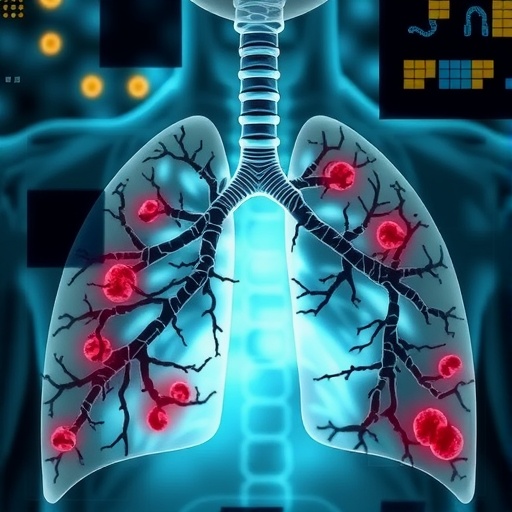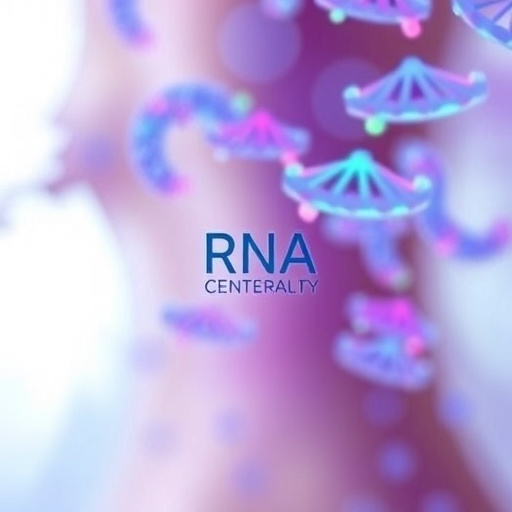In a groundbreaking study poised to reshape our understanding of early psychosis, researchers led by Tang, Wei, and Pang have uncovered stage-dependent patterns of cognitive network connectivity that underscore the complex neural transformations occurring at the onset of psychotic disorders. Published in Nature Communications in 2025, this research provides unprecedented insights into how distinct phases of early psychosis manifest differently at the level of brain connectivity, potentially opening new avenues for diagnosis and intervention.
Psychosis, marked by a profound disconnection from reality, often presents with disorganized thinking, hallucinations, and delusions. Historically, clinical approaches have treated early psychosis as a homogenous condition, yet the neural substrates underlying its various stages have remained poorly understood. This study challenges that paradigm by demonstrating that cognitive networks—the interconnected web of brain regions responsible for processes such as memory, attention, and executive function—are not uniformly disrupted but instead display unique connectivity patterns depending on the stage of psychosis.
Utilizing advanced neuroimaging techniques, including resting-state functional magnetic resonance imaging (fMRI), the team examined the brain connectivity profiles of individuals in the initial phases of psychotic illness. Resting-state fMRI enables the visualization of intrinsic brain activity independent of external tasks, offering a window into the brain’s default organizational architecture. Through meticulous analysis, the researchers revealed that early-stage psychosis is characterized by hyperconnectivity within specific cognitive networks, whereas later stages exhibit pronounced hypoconnectivity, indicating a progressive deterioration in the brain’s integrative capabilities.
One of the key findings centers on the dynamic modulation of the default mode network (DMN), a critical network implicated in self-referential thought and mind-wandering. In the prodromal phase, before full-blown psychosis develops, the DMN demonstrated abnormally increased functional connectivity among its nodes, suggesting heightened internal processing and possibly contributing to the intrusive thoughts and paranoia often reported during this period. This hyperconnectivity gradually diminished as the disorder progressed, reflecting a breakdown in the network’s integrity aligned with worsening symptomatology.
The study also highlights disruptions within the frontoparietal control network (FPCN), essential for cognitive control and adaptive behavior. Early psychosis stages featured increased synchronous activity between the FPCN and limbic structures, indicating an aberrant coupling that may underlie emotional dysregulation observed in patients. Over time, decoupling occurs, impairing the ability to regulate thought and behavior, and potentially leading to the cognitive deficits characteristic of chronic psychosis.
Importantly, these stage-specific connectivity profiles were validated through machine learning algorithms capable of classifying patients according to illness stage based solely on neuroimaging data. This methodological innovation not only confirms the biological distinctiveness of psychosis phases but also points towards objective biomarkers that could revolutionize early diagnosis and personalized treatment planning.
The implications of this work extend beyond fundamental neuroscience. Clinically, distinguishing the neural signatures of initial and established psychosis could refine the timing and nature of therapeutic interventions. For instance, treatments aiming to modulate abnormal hyperconnectivity in the prodromal phase might prevent the progression to full psychosis, whereas strategies enhancing connectivity and network integration in later stages could mitigate cognitive decline.
Moreover, the research underscores the heterogeneity of psychotic disorders, emphasizing the need for stage-specific frameworks in both research and practice. Such approaches challenge the one-size-fits-all model and encourage nuanced perspectives that account for temporal progression and neural dynamics, fostering the development of more effective and targeted therapies.
From a technical standpoint, the application of sophisticated network analysis tools, including graph theory metrics, enabled a granular assessment of connectivity patterns. Metrics such as nodal degree, local efficiency, and modularity illuminated not only the presence of connectivity alterations but their functional significance within the broader organizational context of the brain. This comprehensive analytical strategy provided a multi-dimensional understanding of how cognitive networks reorganize throughout the course of early psychosis.
Furthermore, the incorporation of longitudinal data was critical in capturing the temporal evolution of these network changes. By following individuals over time, the study avoided the pitfalls of cross-sectional designs, which can obscure dynamic processes, and instead delivered a vivid portrayal of how brain connectivity trajectories correlate with clinical symptoms and functional outcomes.
Beyond the immediate clinical relevance, these findings contribute to a larger conversation within neuroscience about the modular versus integrative nature of brain dysfunction in psychiatric conditions. The observed shift from hyper- to hypoconnectivity could reflect an underlying failure of the brain’s homeostatic mechanisms, with initial compensatory over-engagement eventually giving way to network collapse.
This conceptualization aligns with emerging theories positing psychotic disorders as disorders of neural dysconnectivity, but crucially, the study by Tang and colleagues advances this framework by delineating how these disruptions vary precisely with illness stage. This temporal mapping underscores the brain’s remarkable plasticity and the potential for interventions to recalibrate network function if delivered at the right time.
The researchers also address potential confounds, such as medication effects and comorbidities, through stringent inclusion criteria and sophisticated statistical controls, bolstering confidence in the validity of their conclusions. Such rigor is essential for translating these neuroimaging biomarkers into clinical tools but also for understanding the fundamental neurobiology of psychosis untainted by pharmacological influences.
Looking ahead, this research paves the way for integrative studies combining multimodal imaging, genetic profiling, and cognitive assessments to build even more precise models of psychosis progression. The ultimate goal is a holistic, personalized framework that predicts risk, monitors disease evolution, and guides individualized interventions based on neural signatures.
Importantly, this study exemplifies the transformative power of advanced imaging and computational approaches in psychiatric research, domains often critiqued for their diagnostic ambiguity. By anchoring clinical phenomena in quantifiable brain network alterations, the authors have contributed to the reclamation of psychosis as a biologically grounded disorder amenable to objective assessment and targeted treatment.
In sum, the identification of stage-dependent cognitive network connectivity patterns in early psychosis represents a seminal step toward unraveling the neurobiological complexity of this enigmatic condition. The nuanced understanding furnished by this research not only challenges conventional paradigms but also kindles hope for improved outcomes through stage-informed diagnostic and therapeutic strategies, promising a brighter future for individuals afflicted by psychotic disorders.
Subject of Research: Early-stage psychosis and cognitive brain network connectivity patterns.
Article Title: Stage-dependent patterns of cognitive network connectivity in early psychosis.
Article References: Tang, X., Wei, Y., Pang, J. et al. Stage-dependent patterns of cognitive network connectivity in early psychosis. Nat Commun (2025). https://doi.org/10.1038/s41467-025-66894-3
Image Credits: AI Generated
Tags: brain connectivity patternscognitive network connectivitydiagnosis and intervention for psychosisdisorganized thinking in psychosisearly stages of psychosisexecutive function disruptionhallucinations and delusionshomogeneous vs heterogeneous psychosis treatmentmemory and attention in psychosisneural transformations in psychotic disordersneuroimaging techniques in psychosisresting-state fMRI in research





